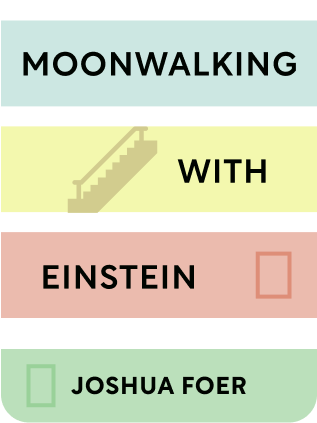

This article is an excerpt from the Shortform summary of "Moonwalking With Einstein" by Joshua Foer. Shortform has the world's best summaries of books you should be reading.
Like this article? Sign up for a free trial here .
What are internal and external memory? How are they different, and how do they work together to help form your memories?
Internal and external memory are two types memory that we use. Internal memories are your actual memories, while external memories are actually memory aids—things like notes, books, and photographs serve as external memories.
Keep reading to find out more about how internal and external memory work.
What are Internal and External Memory?
Memory exists outside of our brains, too. There are two different ways to store memories: internal memory and external memory.
- Internally. Internal memories consist of the information individuals keep in their heads.
- Externally. External memories consist of memory aids such as books, calendars, phone books, and so on. External memory transcends our own lifetimes and allows us to share information in our memories with others. In modern times, people tend to rely on external memories rather than internal ones.
- An extreme version of an external memory is called lifelogging, in which you externally keep track of everything that happens to you. Lifelogger Gordon Bell wears a camera around his neck, records all his speech, and scans every piece of paper he reads. He stores the information on a hard drive and adds about a gigabyte per month.
An external memory can’t yet completely replace an internal one. Gordon Bell can’t search for anything in his external memory without a cue—a search term—from his internal memory. For example, one day, Bell wanted to find a website he’d visited. The only thing he could remember was that at the time he’d been on the website, he was also talking to a realtor on the phone. In his external memory, he could look up the time of the phone call and then look up what else he was doing at the time.
In the future, it may be possible to seamlessly connect our internal memory and external memory. Neuroprosthetics that allow direct communication between the brain and a machine already exist. For example, there’s a type of cochlear implant that transforms sound waves into electrical impulses. These impulses are then sent to the brain stem. This allows deaf people to hear.
However, science doesn’t know yet how cells actually “contain” a memory. No one has seen a memory. Scientists have a good idea of what happens between and inside brain cells, and they can look at which parts of the brain light up when people are thinking, but they don’t know that much about thought and memory themselves.
What science does know is that we only consciously remember things when cued. Because our brains are a web rather than a straight pathway, we can’t search our brains in any linear way. We remember something when we think about something else that’s connected to it in the web of associations. For example, if you met someone whose name you’ve forgotten, you might have to think about what the person did for a living or where you met them in order to cue the memory you’re actually looking for.
Additionally, “memory” isn’t a single entity—it’s many different systems and facets. Some people have good memories for names and faces, while others are better at numbers.
Parts of the Brain: How Do External Memory and Internal Memory Work?
The study of internal and external memory necessitates the study of the brain. Memories are created in, stored in, and affected by different parts of the brain:
- Neocortex. This is the brain’s wrinkly-looking outer layer. It stores memories.
- Hippocampus. This is involved in converting our perceptions into long-term memories. The right posterior section is involved in spatial navigation, which, as we’ll see, is an important aspect of memory.
- Medial temporal lobe. This contains the hippocampus and is involved with long-term memory.
- Basil ganglia. This is involved in learning habits.
- Cerebellum. This is involved in learning motor skills.
- Frontal and parietal cortices. These are involved with recalling long-term memories.
When we use our brains, they physically change—we can form new neurons and rearrange connections. This is known as neuroplasticity. For example, neuroscientist Eleanor Maguire studied the brains of London cabbies-in-training. She found that their right posterior hippocampi (responsible for spatial navigation) were 7% larger than the average person’s because they spent so much time memorizing the layout of the city.
Types of Memory
There are several different classifications and types of memory, some related to specific parts of the brain. Here’s some background about internal and external memory.
16th Century
Interestingly, memory techniques underwent a resurgence even as the need for an internal memory decreased due to mass-produced books and indexes. In the Renaissance, people became re-interested in Plato’s idea that our world is just a shadowier version of an ideal reality. Guilio Camillo believed that there was a set of magical images that represented everything in the universe. If you could just memorize those images, you would learn the workings of the entire universe. This was one interesting theory on how internal and external memory worked.
To this end, Giulio Camillo made plans to build the “Theater of Memory.” The Theater of Memory was architecturally similar to a Roman amphitheater, but where the spectators would have sat, there were paintings and boxes and drawers of cards. Everything that was known about the universe was written on the cards. However, you weren’t supposed to physically visit this building to learn the information; you were supposed to mentally visit it. The idea was that if you visualized the image of a painting, the information stored near that painting would pop into your head.
The Theater of Memory was never finished, partly because the builders didn’t understand the concepts of internal memory and external memory.
A second notable figure during this time was Giordano Bruno. Inspired by the mystic and philosopher Llull, Bruno came up with a device that would let him turn any word into an image, thus allowing him to better remember the word. The device was composed of a series of concentric circles, similar to a cipher wheel. Each circle had a letter pair that corresponded to an image, action, adjective, object, and circumstance. If you turned the wheels to spell out the word, you’d end up with a memorable image. For example, the Latin word cr/oc/it/us is Pilumnus (a Roman deity)/riding a donkey/with a bandaged arm/and a parrot sitting on his head.
The church was concerned about the potential occult implications of the device and Bruno was burned at the stake during the Inquisition.
Internal and external memory are two important parts of how memory works, and are a part of what makes a person unique.

———End of Preview———
Like what you just read? Read the rest of the world's best summary of Joshua Foer's "Moonwalking With Einstein" at Shortform .
Here's what you'll find in our full Moonwalking With Einstein summary :
- The memory techniques that took the author from novice to US memory champion in one year
- The 6 key types of memory we use everyday
- Why memory isn't just genetic, and how you can improve your memory with the right techniques






